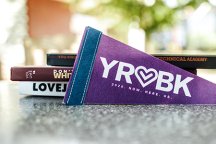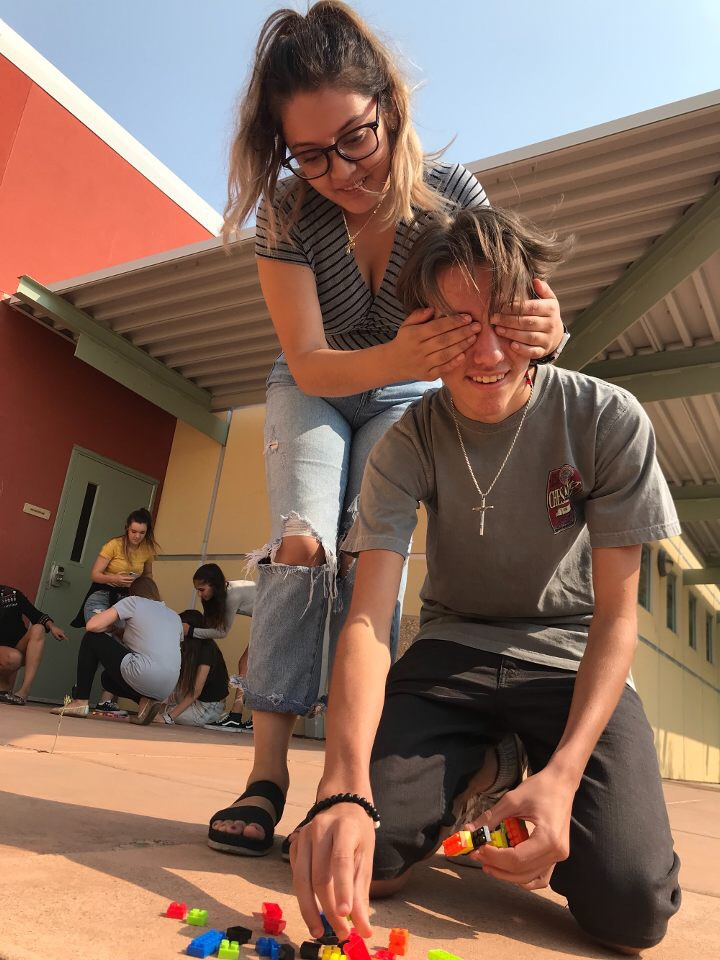REAL LIFE TIPS TO TRAIN YOUR YEARBOOK STAFF
Kristin Caldwell, a real-life yearbook adviser, is featured in this video, along with the fantastic advice she has implemented in her own classroom.
TEAM BUILDING ACTIVITIES DOUBLE AS SKILL DRILLS TO COMBINE OPPORTUNITIES FOR PRACTICE AND PLAY
Every day matters in the yearbook classroom. While the constant flurry of activity and important push toward deadlines creates a signature learning experience for students, it’s essential for advisers to carve out time for skill building and staff development with fun, meaningful activities.
A 15-minute activity with Legos or blocks, for example, can be a powerful way to teach yearbook skills while staffers interact, play and engage in friendly competition.
Here’s how:
Form small groups (three-to-five students each) and give each group a small set of LEGOs or blocks. In each group, one person is assigned the role of building a tower. The builder can’t see, however, because another group member acts as a human blindfold, covering the builder’s eyes. Set a time limit, such as one minute or 90 seconds, and as groups compete to build the tallest towers, the other group members capture the competition as photographers.
Seeing the collaboration and chaos is hilarious as the blindfolded builder works to follow instructions from the teammate covering their eyes. Photographers can move around above, below and beside the action to capture facial expressions and tell the story.
When the timer expires, everyone can see which group had the highest freestanding tower, which is fun to celebrate with a simple prize. Clap and cheer to make a big deal for the winning team, and then take a minute to draw parallels to the yearbook experience, such as what it feels like when the deadline approaches (we want more time!) or how to overcome challenges, support each other and try new things.
BUILDING FROM THERE
Staffers will love the fast-paced fun. But it doesn’t stop there. Next, invite each group to review their photos. Give them a minute or two to discuss which image is strongest and have them share it, either using a Google Drive folder link or working within the school’s learning management system so staffers are familiar with how to turn in images.
The game becomes a mini-lesson, then, as the adviser or photo editor leads a quick critique by projecting the images on a screen or having students click through them together. For an inexperienced staff, the adviser might point out one strength and weakness for each photo and introduce new vocabulary about angles and composition techniques. On a more experienced staff, students might share their own observations or have editors lead the critique. Students can vote to select the overall best image, or the adviser can announce which shot is best. Awarding a prize to the winning photo group is another great celebration, and it reinforces the significance of having excellent photography in each part of the yearbook.
Introductory activities like these create a win/win, as students get to engage in team building exercises while practicing essential skills. Advanced staffers can use the opportunity to hone their craft, but it’s even better to make sure they’re assigned as tower builders while beginners take on the photographer roles.
ADDING ANOTHER LEVEL
From there, the extension options are endless. For example, invite each group to submit two great photos, and then from the full set of images, ask students to choose which five they’d use for a storytelling package on a yearbook spread. Which would be the dominant? Why? Or after the class determines which single image is best, assign each group to write a caption for that photo within a three-minute time limit. Then critique the captions, too. When everyone participates in the same activity, it’s easy to critique captions, emphasizing accuracy and detail while reinforcing structure or format.
With a little more time, other options include conducting a mini press conference with the tower builders to practice interviewing skills so the captions include meaningful quotes. Or work through camera settings and shoot again, giving different students the role of tower builder.
Whitney High School | CA
REACHING NEW HEIGHTS
Each time students collaborate, veteran staffers can guide their less-experienced peers, which helps develop relationships and build trust. Practicing in a low-stakes environment with small teams gives them a chance to ask questions, gain feedback and increase confidence before applying these skills to their yearbook spreads on deadline.
Scheduling a “practice and play” activity like this on a weekly or monthly basis really pays off, creating the chance to laugh and do something out of the ordinary. After leading the first activity, advisers can assign editors to plan their own and bring items from home. Anything with minimal setup and cleanup, inexpensive supplies and the opportunity for interaction works great.
Giving students a chance to engage in these experiences helps everyone get better faster while creating lasting yearbook staff memories.
— Sarah Nichols, MJE | Adviser to Details yearbook, Whitney High Student Media, (CA)


